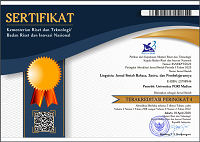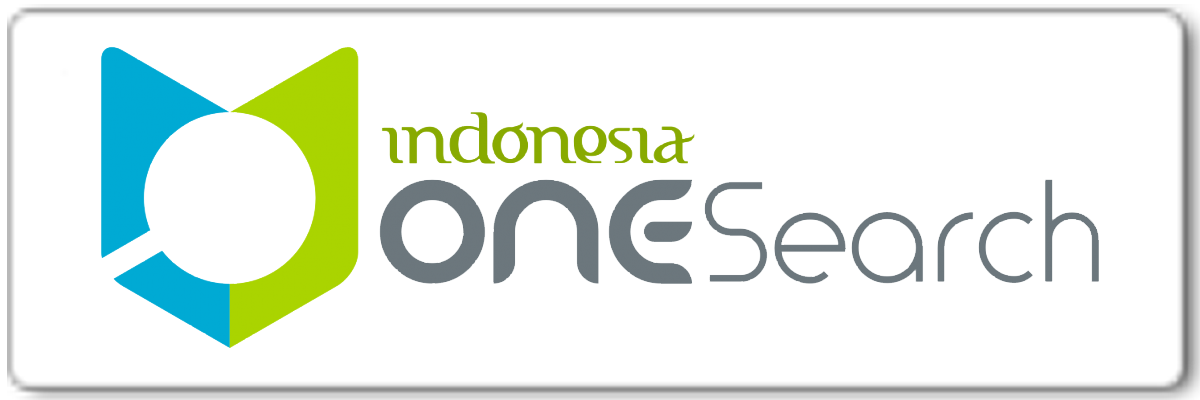PBL on Learning Reading Text for Enhancing Learner’s Speaking Ability
Abstract
Keywords
Full Text:
PDFReferences
Ardhana, W. (1997). Pandangan Konstruktivistik Tentang Pemecahan Masalah Belajar. Makalah Seminar TEP PPS IKIP Malang.
Arends, R. I. (2004). Classroom instruction and management. Boston: McGraw Hill.
Barrows, H. S. (1998). The essentials of problem-based learning. Journal of Dental Education, 62(9), 630-633
Degeng, N.S. (1999). Mencari Pendekatan Baru Pememcahan Masalah Belajar, Jayapura: Yayasan Jayawijaya, Kuala Kencana PT. Freeport Indonesia.
Delfi, Syofia & Yamat, Hamidah. (2017). Extensive Reading in Developing English Competency for Indonesian EFL Learners Majoring in English. IJELTAL (Indonesian Journal of English Language Teaching and Applied Linguistics), 1(2), 2017.
Dodd, L. (2007) The impact of Problem-Based Learning on the Information Seeking Behaviour and Information Literacy of Veterinary Medicine Students at University College Dublin’, Journal of Academic Librarianship, 33(2), 206-21
Grzeskowiak, Podlewski, Koska, Zaba, and Drobnik (2009). Problem Based Learning as a method of Teaching Learning at the University of Medical Sciences in Poznan, Poland
Maybodi, A. S. P. & Maibodi, A.H. (2017). The Effect of Teaching Summarization Strategies on Reading Comprehension of Science and Humanities Iranian High School Students. Indonesian Journal of EFL and Linguistics, 2(1), 2017
Mustaji. (2009). Pengembangan Model Pembelajaran Berbasis Malah Dengan Pola Kolaborasi Dalam Mata Kuliah Masalah Sosial, ProgramStudi Pascasarjana, Universitas Negeri Malang
Nemati, Azadeh. (2016). Portfolio Keeping Ends to a Good Product: The Cases of Reading and Motivation. ASIAN TEFL, 1(2), 2016
Parta, I.N. (2009). Pengembangan Model Pembelajaran Inquiry untuk Mempeluas Pengetahuan Matematika Mahasiswa Calon Guru melalui Pengajuan Pertanyaan. Disertasi tidak diterbitkan. Surabaya: UNESA.
Pickering, Blackburn and Moffet (1992). Dimensions of Learning.ASCD, 1250 N. Pitt St, Alexandria, VA 22314
Reiser, and Dempsey (2002). Trends ans Issues in Instructional Design and Technology. Upper Saddle River, New Jersey Columbus, Ohio.
Sukmadinata, N. S. (2010). Metode Penelitian Pendidikan. Bandung: PT Remaja Rosdakarya Offset.
Treiman, R. (2001). Reading. In M. Aronoff & J. Rees-Miller (Eds.), Handbook of linguistics (pp. 664– 672). Oxford England: Blackwell.
Tunmer, W. E. (2008). Recent developments in reading intervention research: Introduction to the special issue. Reading and Writing: An Interdisciplinary Journal, 21, 299–316
Willis, J. and Wright, K.E. (2000). A General Set of Procedure for C-ID: the New R2D2 model. Educational Technology, Mar-Apr.5-20
Wilson (1995). Metaphors for Instruction: Why we talk about learning environment. Educational Technology, 35(5),25-30
Article Metrics
Abstract has been read : 399 timesPDF file viewed/downloaded: 0 times
DOI: http://doi.org/10.25273/linguista.v3i1.4655
Refbacks
- There are currently no refbacks.
Linguista: Jurnal Ilmiah Bahasa, Sastra, dan Pembelajarannya indexed by:
View My Stats








